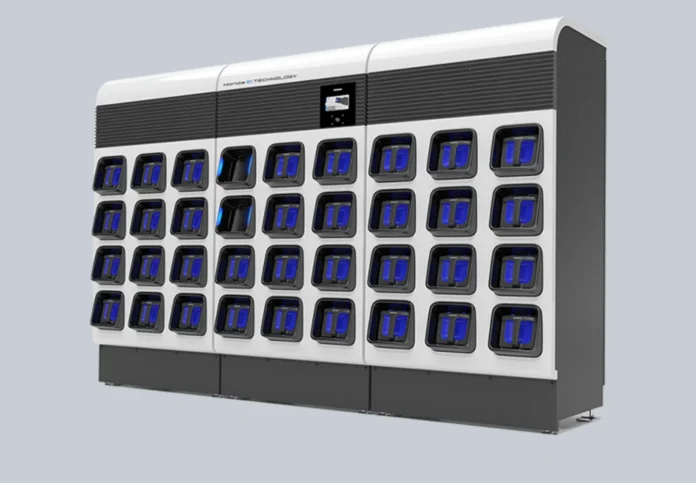Mumbai has introduced battery-swapping stations at 31 Metro and Monorail locations. These battery-swapping kiosks allow users of Honda-compatible electric two- and three-wheelers to quickly exchange their depleted Mobile Power Pack for a fully charged one in under two minutes.
Mumbai’s latest battery swapping initiative is a collaboration between Maha Mumbai Metro Operation Corporation Ltd (MMMOCL) and Honda Power Pack Energy India Pvt Ltd. The project has installed battery swapping stations for two and three-wheeled electric vehicles in battery kiosks at 25 Metro stations across the city, as well as six monorail stations.
MMMOCL expects the stations to earn extra non-fare revenue, diversifying and increasing income in Mombai’s public transport system. While battery swapping stations are being introduced all over India, this project represents the first time these have been introduced within public transport systems in the country. Honda is one of the early movers with battery swapping technology globally, collaborating with other light electric vehicle manufacturers to standardise batteries accordingly.
Chief Minister of Maharashtra, Shri Devendra Fadnavis, said, “Our government is committed to accelerating electric mobility across Maharashtra. Battery swapping stations at metro and monorail nodes will support delivery personnel, daily riders, and fleet operators in making the EV shift. This initiative is a perfect example of how smart infrastructure and green technology can come together for public benefit.”
Mumbai is considered the startup and financial capital of India and is the capital of the state of Maharashtra. The city’s approximately 22 million inhabitants are being increasingly exposed to lower pollution levels as public transport, electric car charging, and even electric ferry services are spreading across the city.
The dynamic shift to electric vehicles in India follows both federal and state initiatives to not only lower pollution levels but also to increase the country’s energy security. India, like China, does not have much in the way of domestic oil resources. Their goals to increase energy security with electrification have seen both countries, each with the world’s first and second largest populations, rapidly transition to electric vehicles, significantly reducing oil demand globally.
Dr. Sanjay Mukherjee, IAS, Metropolitan Commissioner, MMRDA & Chairman, MMMOCL, said, “This collaboration with Honda marks a significant stride in our mission to create a sustainable, low-emission urban ecosystem. By enabling quick and convenient battery swapping at metro and monorail locations, we are laying the foundation for future-ready transport.”
Battery swapping in areas with high population density has enabled rapid electrification with space-saving vehicles while keeping batteries in lifecycle loops. This saves resources with recycling, without consumers having to participate in battery recycling efforts. While battery swapping is used for electric cars, such as with Nio, both light electric vehicles and heavier logistics and delivery vehicles benefit from being able to remain on the roads without charging times and therefore no costly downtime.
indiatoday.in, indianexpress.com, maharashtra.gov




